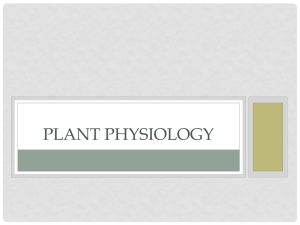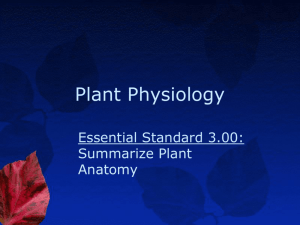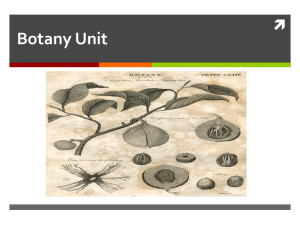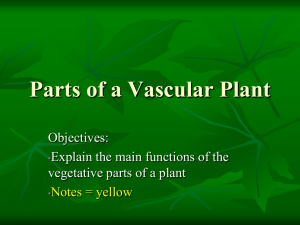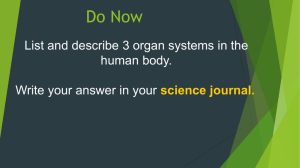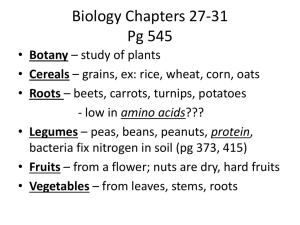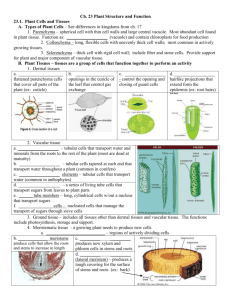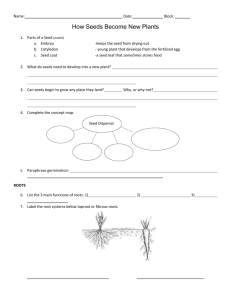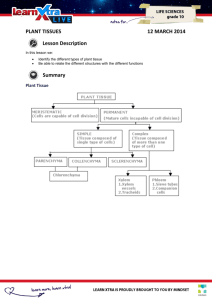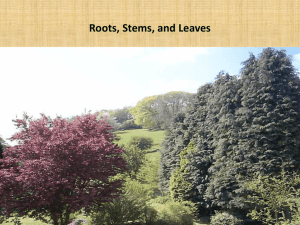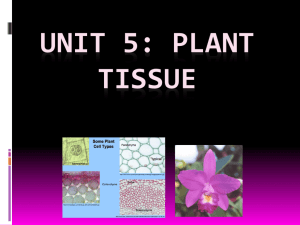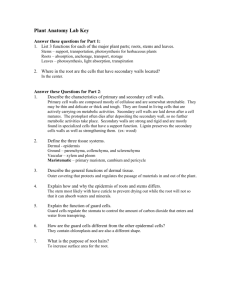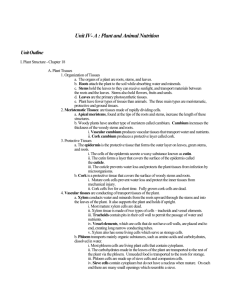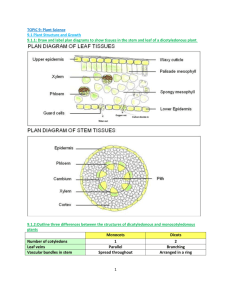Structure of Seed Plants
advertisement
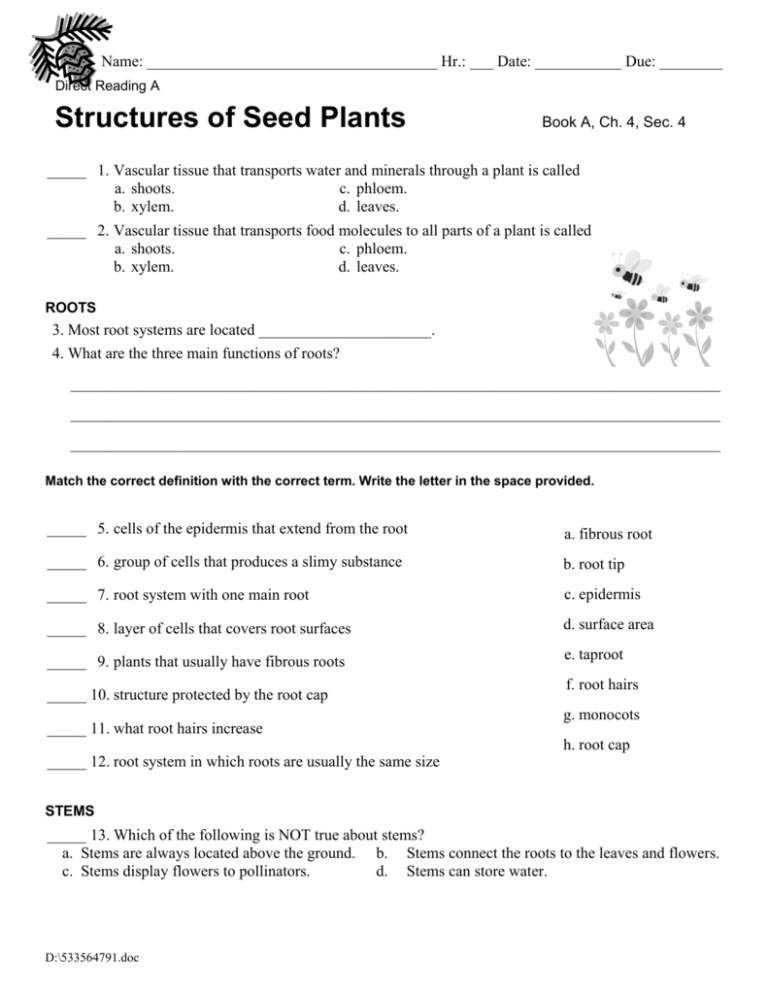
Name: _____________________________________ Hr.: ___ Date: ___________ Due: ________ Direct Reading A Structures of Seed Plants Book A, Ch. 4, Sec. 4 _____ 1. Vascular tissue that transports water and minerals through a plant is called a. shoots. c. phloem. b. xylem. d. leaves. _____ 2. Vascular tissue that transports food molecules to all parts of a plant is called a. shoots. c. phloem. b. xylem. d. leaves. ROOTS 3. Most root systems are located ______________________. 4. What are the three main functions of roots? ___________________________________________________________________________________ ___________________________________________________________________________________ ___________________________________________________________________________________ Match the correct definition with the correct term. Write the letter in the space provided. _____ 5. cells of the epidermis that extend from the root a. fibrous root _____ 6. group of cells that produces a slimy substance b. root tip _____ 7. root system with one main root c. epidermis _____ 8. layer of cells that covers root surfaces d. surface area _____ 9. plants that usually have fibrous roots e. taproot _____ 10. structure protected by the root cap _____ 11. what root hairs increase f. root hairs g. monocots h. root cap _____ 12. root system in which roots are usually the same size STEMS _____ 13. Which of the following is NOT true about stems? a. Stems are always located above the ground. b. Stems connect the roots to the leaves and flowers. c. Stems display flowers to pollinators. d. Stems can store water. D:\533564791.doc _____ 14. What does xylem do? a. It carries food to plant parts. c. It carries water and minerals from the roots to the leaves. b. It dissolves minerals and food. d. It grows longer roots. _____ 15. What does phloem do? a. It carries food to plant parts. c. It takes water and minerals to stems. b. It participates in photosynthesis. d. It dissolves minerals. _____ 16. Stems that are soft, thin, and flexible are a. xylem. c. phloem. b. herbaceous. d. woody. 17. Name two examples of plants with herbaceous stems. 1. ______________________________________________________________ 2. ______________________________________________________________ 18. What is a growth ring? ______________________________________________________________ __________________________________________________________________________________ LEAVES _____ 19. What is the main function of leaves? a. They create water for the plant. c. They make food for the plant. 20. From top to bottom, list the four layers in a leaf. b. d. They keep insects away from the plant. They absorb oxygen for the plant. ___________________________________________________________________________________ ___________________________________________________________________________________ ___________________________________________________________________________________ ___________________________________________________________________________________ 21. Most photosynthesis takes place in the ______________________ in the middle of the leaf. Match the correct definition with the correct term. Write the letter in the space provided. _____ 22. cells that open and close the stomata _____ 23. layer of cells that contains many chloroplasts a. stoma _____ 24. a single layer of cells beneath the cuticle b. guard cells _____ 25. a tiny opening that allows carbon dioxide to enter the leaf c. spongy layer _____ 26. layer where carbon dioxide moves freely and xylem and phloem are found d. epidermis _____ 27. structure that prevents water loss from the leaf e. palisade layer f. cuticle 28. Cactus spines are ______________________ that protect cactuses from animals. 29. The leaves of the sundew plant catch ______________________ which are digested to provide nitrogen to the plant. FLOWERS 30. Why do some plants have flowers? ___________________________________________________________________________________ ___________________________________________________________________________________ ___________________________________________________________________________________ 31. In a flower, modified leaves called ______________________ protect the bud. 32. The broad, flat, thin leaflike parts of a flower, called,______________________ attract insects and other animals. 33. The male reproductive structure of flowers is a(n) ______________________. 34. In flowers, a(n) ______________________ is the female reproductive structure. 35. If the egg is fertilized, the ______________________ develops into a fruit and the ______________________ develops into a seed. 36. List three ways that humans use flowers. __________________________________________________________________________________ __________________________________________________________________________________ __________________________________________________________________________________ Match the labels to the illustration. Write the letters in the space provided. _____ 37. sepal _____ 38. petal _____ 39. ovary _____ 40. ovule _____ 41. anther _____ 42. pistil _____ 43. filament _____ 44. stigma _____ 45. style _____ 46. stamen



